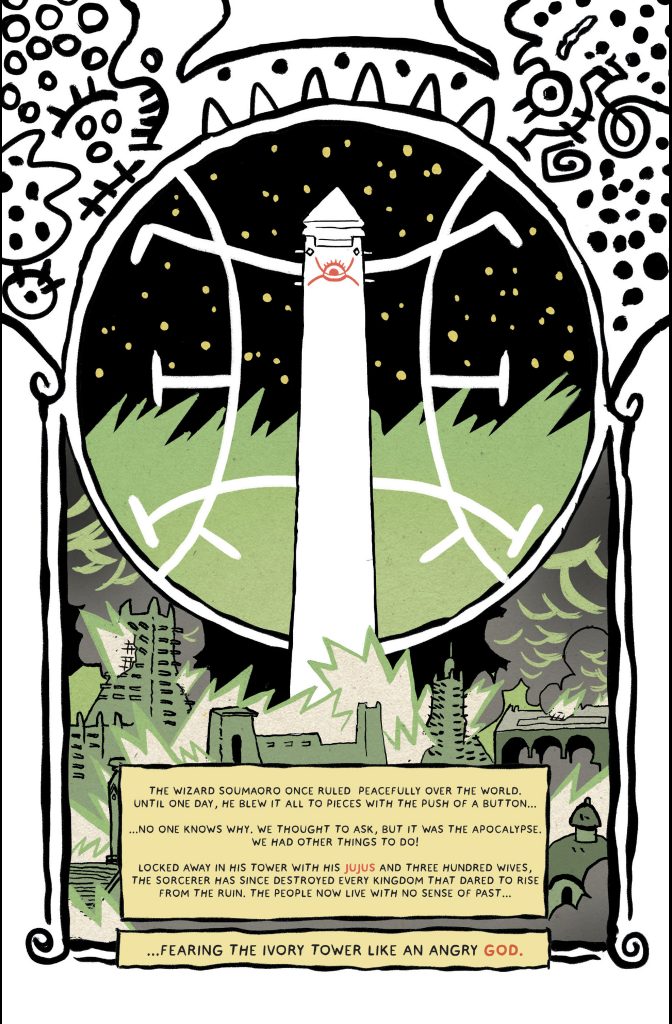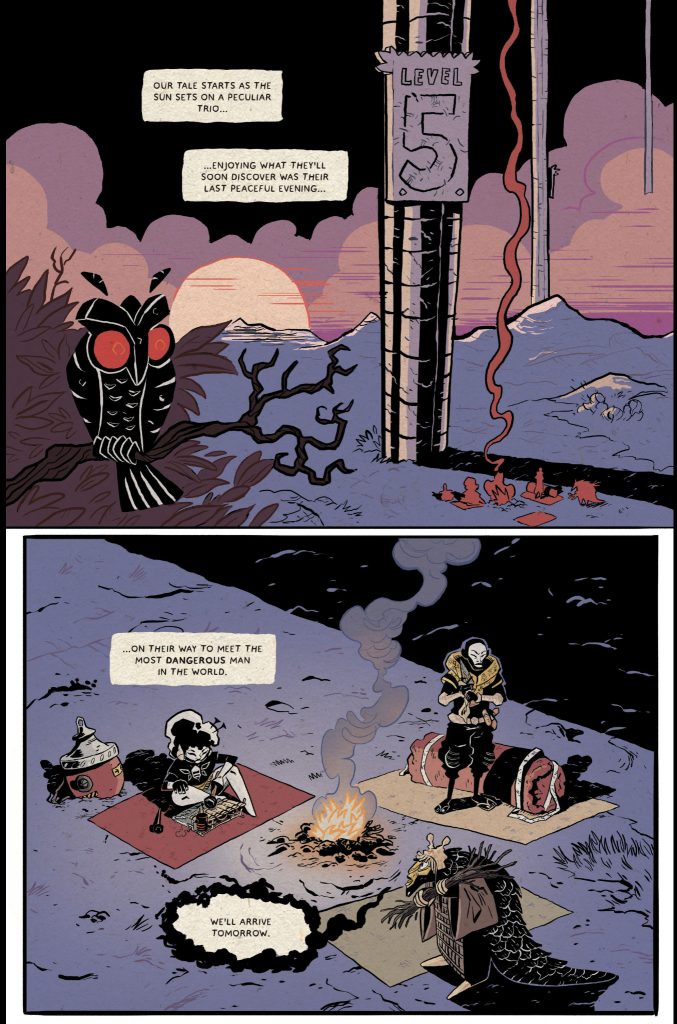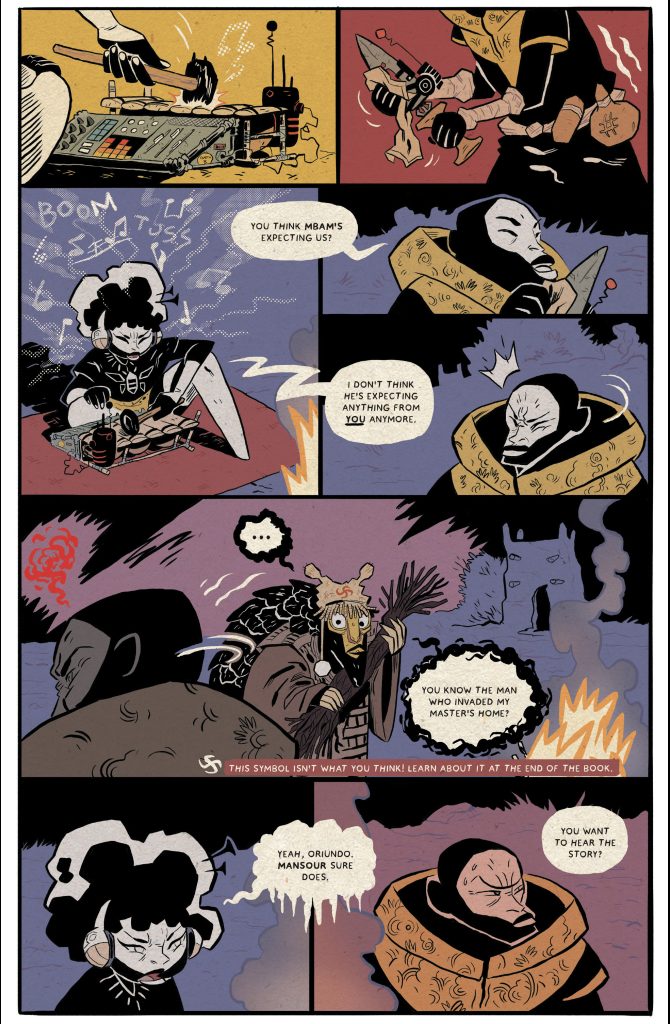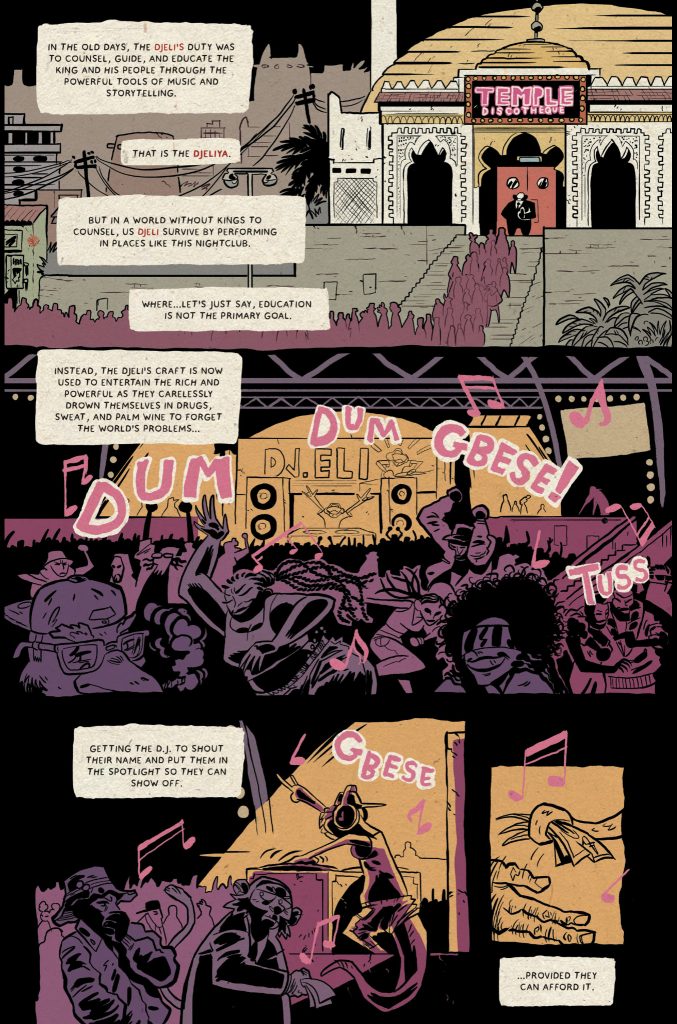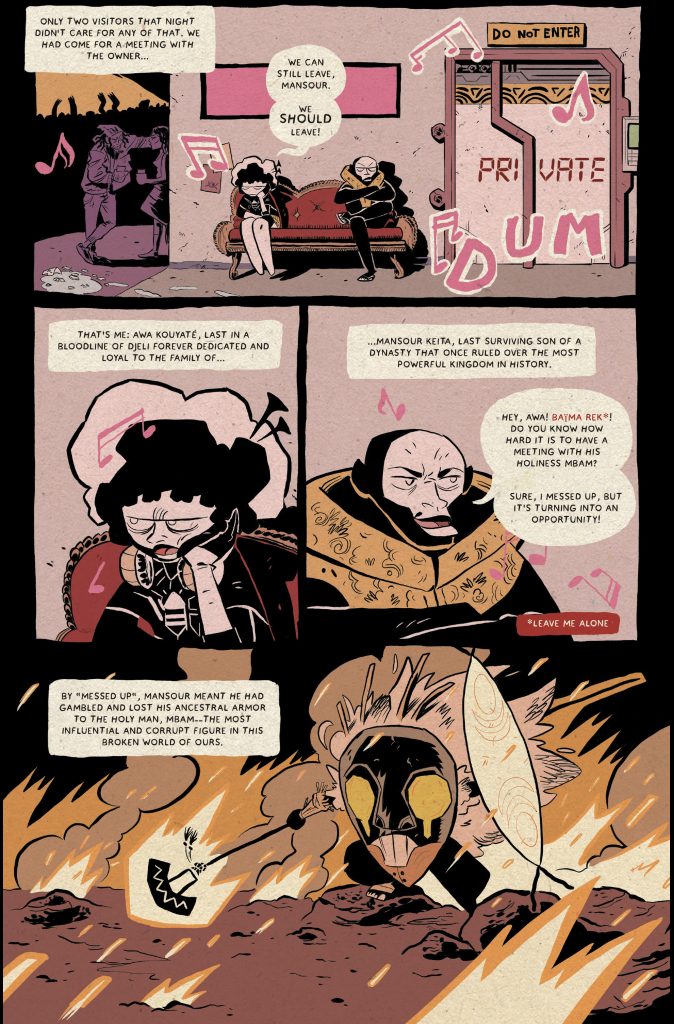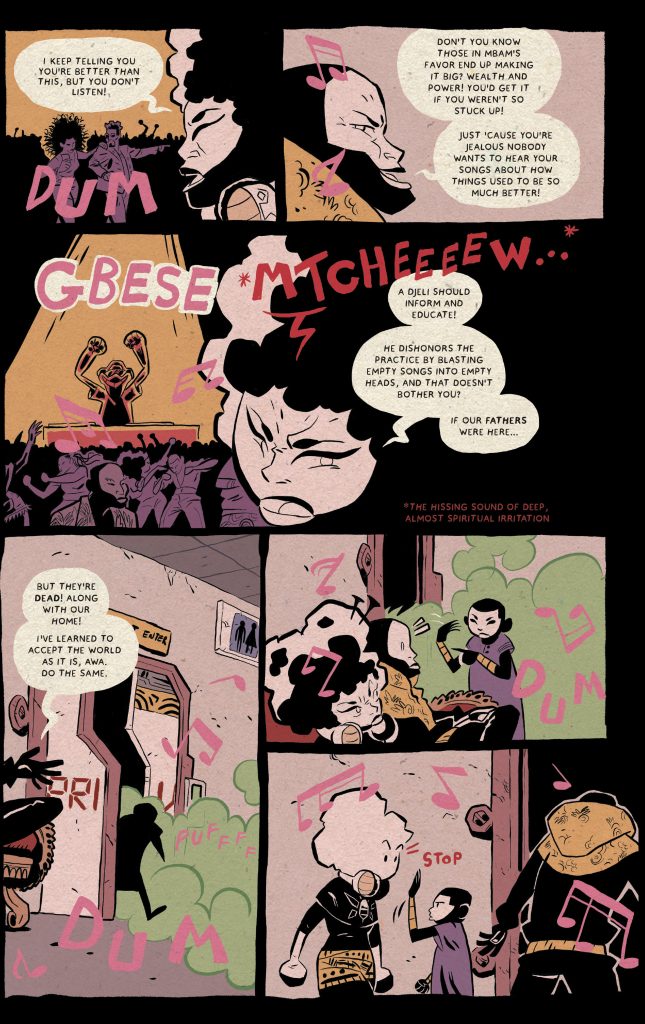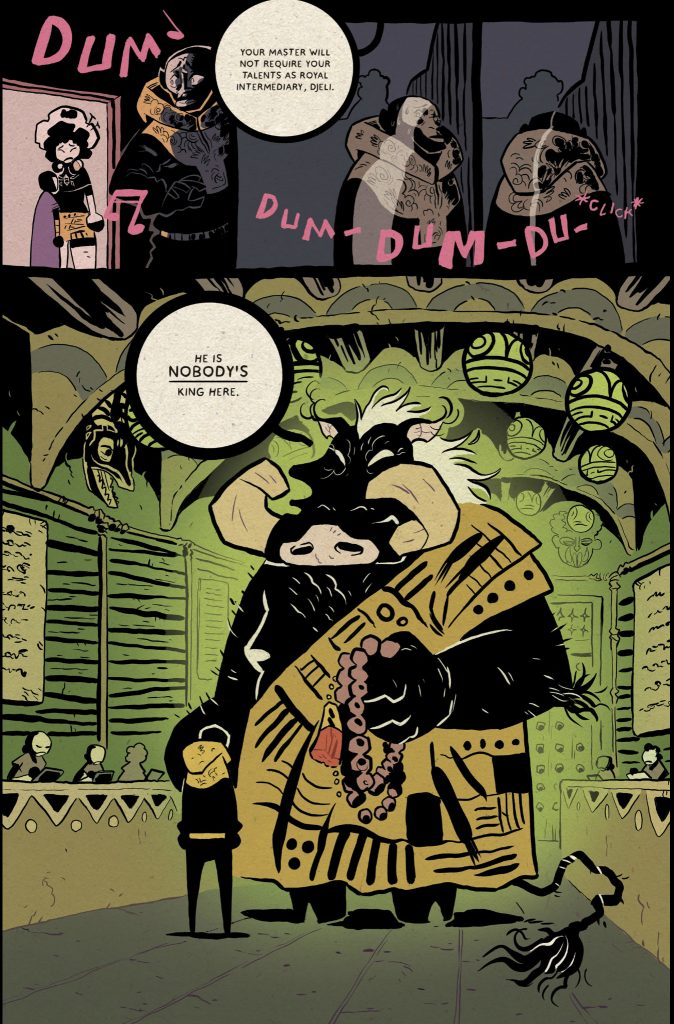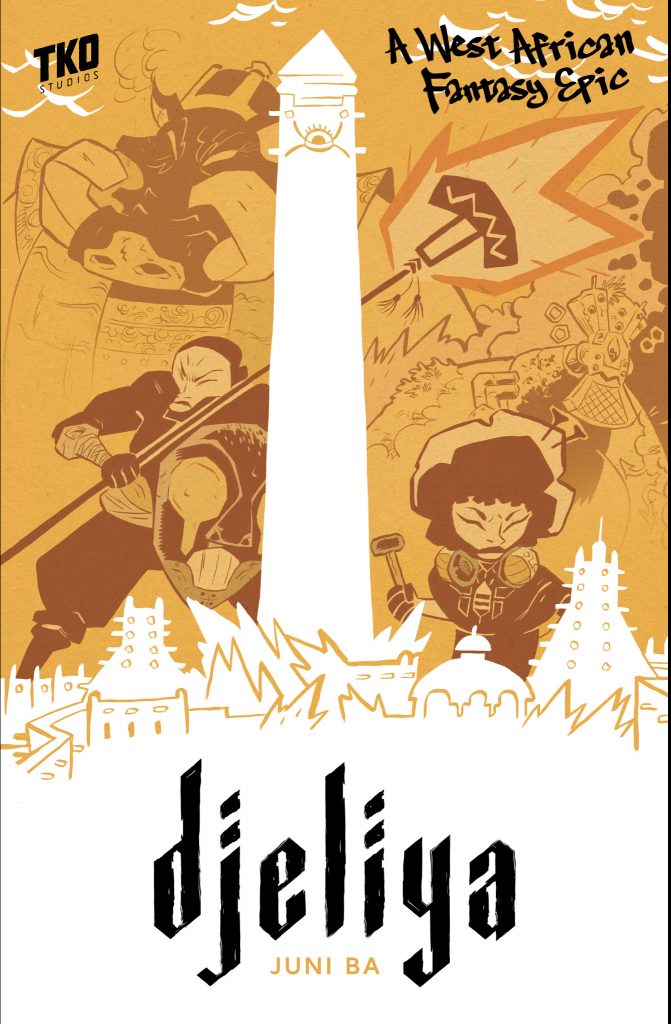
- Djeliya
- TKO Studios
- Created, Written, & Illustrated by
- Available now!
Inspired by Est African folklore & stories handed over centuries, this unique graphic novel follows the adventures of Mansour Keita, last prince of a dying kingdom, and Awa Kouyaté, his loyal Djeli, or ‘royal storyteller’ as they jou8rney to meet the great wizard who destroyed their world and then withdrew into his tower, never to be seen again.
On their journey they’ll cross paths with friend and foe, from myth and legend alike, and revisit the traditions, tales, and stories that gave birth to their people and nurture them still. But what dark secret lies at the heart of these stories, and what purpose do their tellers truly serve?
A huge thanks to TKO media maestro, Marc Visnick, for going above and beyond to make sure thePullbox was paying attention to this book. As a reviewer, I have all the respect in the world for a publisher or independent creator trying to get eyes on their work. But one of the highest compliments I’ve had for TKO from their start is that as a publisher they go out of their way to stand behind their product. From making their first issues available to read online for free to providing several formats by which readers can experience their stories, this has been a company that’s earned my regard and a sizeable spot on my bookshelf.
When we got a complimentary copy of Djeliya (pronounced ja-LEE-ah) for a free giveaway as part of the media press going into the title’s release, I thought that was pretty cool. Then, when Marc found out that we were giving away the book without looking at it, he made sure we got another. Sure, the book had caught my eye before, but with that level of encouragement there was no way I was going to be able to look away without diving in.
Starting with the cover and carrying over onto the first page, the first thing that jumps out has got to be the graphic design of this book. Citing Cartoon Network as one of his early obsessions growing up in Senegal, Juni Ba took obvious inspiration from shows like Samurai Jack and Sonic the Hedgehog comics to create a look that’s wholly his own. If there had been zero dialogue in Djeliya, I think the visual storytelling would have been pretty effective on its own. Characters are distinct, with no two at all alike, and their personalities are pretty well represented in their look. One mistake that some readers might make is assuming that the stylized look Ba goes for was in favor of simplistic character designs. Good lord, Djeliya is anything but “simple”! There are cues seeded throughout the book, hints in the story and nods to the mythology he’s building on to tell his tale, all layered together to ensure that there isn’t a boring panel to be found… when Ba bothers with traditional panel layouts at all.
Boasting that kind of densely packed imagery, it’s that much more important that the artist and writer are working closely together to avoid a disconnect between the two areas of comic book storytelling. Or you could just be an overachiever as a creator and pull double duty in both departments. That’s exactly what Ba did, and we should all be paying respects for the sleepless nights spent bouncing between drawing board and computer.
While Djeliya follows the adventures of disenfranchised Prince Mansour and royal storyteller Awa, Ba doesn’t follow an obvious path from start to finish. He meanders a bit, taking time along the way to foreshadow something here or fill in some backstory there. The reader is introduced to the main characters, and then given some time to get to know them through their actions. At first, there’s some indication that the story might be a little disconnected, bouncing along and in no seeming hurry to get where it’s going. Don’t fall for it! That’s Juni Ba, once again playing on expectations and hoping to catch an unwary reader snoozing. Right about the time you start thinking that maybe this is just a collection of parables for a little light reading, you’re pulled back into the tightly wound narrative. Mansour and Awa believe that they’re out to confront the evil wizard Soumaoro in his forbidden tower, but like in every true parable the real goal is to bring them to the revelation that nothing is so obvious as wizards in their towers, or absolutes like the concept of pure “evil”.
As much as Djeliya leans into oral traditions of storytelling and the importance of legacy, those ideas do get subverted in the very best of ways. Juni Ba pulls his reader in and points out that every story depends on the interpretations assigned to it by the listener (or reader). Everything is a matter of perspective, from the wanderings of a ne’er-do-well prince and the companion who acts as his moral compass, to the momentum of paranoia as it grows exponentially in an information vacuum. Legacy is only important when the lessons of the past are applied to the future, and dogma is a self-defeating ideal when followed without reason.
I’m gonna have to break one of my own dogmatic rules for this review. While my initial reaction to Djeliya was that it was maybe a little too chaotic, by the time I was halfway through my doubts were flipped on end. I’ve had a love of mythology since I was old enough to learn the difference between Greek & Roman, and felt the urge to dig into Norse mythology to learn more about the inspiration behind Lee & Kirby’s god of thunder. There shouldn’t be any shock to find out that the legends and lore of West African traditions go every bit as deep and are every bit as lively. With elements of sci fi adding a little depth to a fantasy setting, I have to recommend this one to anyone looking to peek into a corner of the world that isn’t spotlighted in comics often enough.
Final Score: 13/13
